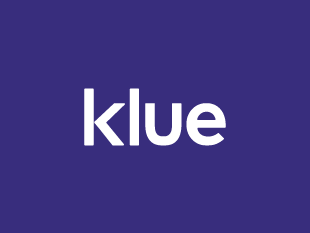Klue Compete
The Competitive Enablement Platform
Learn More
FIND OUT MORE >


The most important reason to align your sales and marketing content is this: by the time a potential customer gets around to speaking to one of your sales reps, she is already two-thirds of the way to a decision. At that point, there’s a 33 percent chance you’re just filler anyway—a mandatory inclusion in the due process of any procurement initiative. And you’re better than that, dammit! B2B sales enablement content is not limited to sell-against guides and battlecards; marketing funnel content is more than infographics and blog posts—the lines have blurred because the consumer now manages much of her journey independently. This hidden sales cycle demands more from your content. It must reflect the specificity of individual requirements, yet speak to a wider audience who may not know what they need yet.
Sales reps and accounts teams languish in the field, dependent on collateral that often doesn’t serve their purpose or speak their language. This causes friction and frustration. Their insights—gained through direct contact with customers—are some of your most valuable intel. They are trained to listen carefully to what consumers say and to notice their silent cues. They are skilled interviewers, subtly gathering key intel on both the buyer’s journey and your competition. Collect as much of it as you can by making it easy for them to report it. It will help you build better content that your sales teams will actually use.
What’s better than the feedback from sales reps? Intel straight from the customers. They’re the ones being pitched by your rivals, experiencing your sales cycle and (maybe – hopefully!) using your product. Conduct extensive win-loss interviews quarterly to gauge performance and to gather first-person feedback for your content. Bake it in to both your sales enablement collateral and your lead-gen content and everything in between. Use their own words when you can. We’re all drawn to our own reflection, so make sure potential buyers see themselves in your copy.
Incorporating sales feedback and customer voice into your content will lend consistency to your buyer experience and reinforce your message. By the time your sales rep is pitching in person, it will feel very familiar and comfortable for everyone.
Your content will serve no purpose unless it can be found and used, anywhere, all the time. This Walker Sands survey on martech sales trends reveals that more than 50 percent of potential buyers do some research on a tablet or smartphone. And it’s no surprise that sales reps increasingly manage their business on their mobile devices. So, is your content readily available and useable to both consumers and team members, no matter the time or place?
A 24-hour marketplace means you’re always on. But you can’t be everywhere at once, so your content is your representation, your proxy. Your best source of both consumer and competitive insight is the field: sales inputs, consumer surveys and customer success stories all give you the words you need to craft a winning message. Powerful content sets your sales teams up to be best prepared when speaking to highly-informed buyers.
A 2014 study by Aberdeen Group found that organizations are more successful when they align marketing and sales needs and inputs when developing campaigns and content. Effective content reflects consumer needs and interests; it answers questions and addresses concerns; and it persuades them to trust your sales team with nothing less than their professional reputation. Don’t waste their time or they’ll move on to the competition.


Competitive Enablement
Product marketers conducting competitive research are drowning in reviews, reports, and messy notes. Here's how Klue's AI foundation will help you complete this analysis in seconds, not weeks.


Competitive Enablement
The topic of Large Language Models (LLMs) has a lot of confusion. Here's what you need to know about how Klue is working with them.


Let’s do it. Tell us a bit about yourself and we’ll set up a time to wow you.
Let's do it. Tell us a bit about yourself and we'll set up a time to wow you.
XLet's do it. Tell us a bit about yourself and we'll set up a time to wow you.
XSubscribe to get our latest AI functionality and news in your inbox.
XOur Buyer Pulse feature, set to launch in Q2 2024, offers valuable insights into the factors influencing buyer decisions in your pipeline. By signing up for the waitlist, we can better gauge interest and proactively engage with you to streamline the setup and integration process before the feature becomes widely available.
X